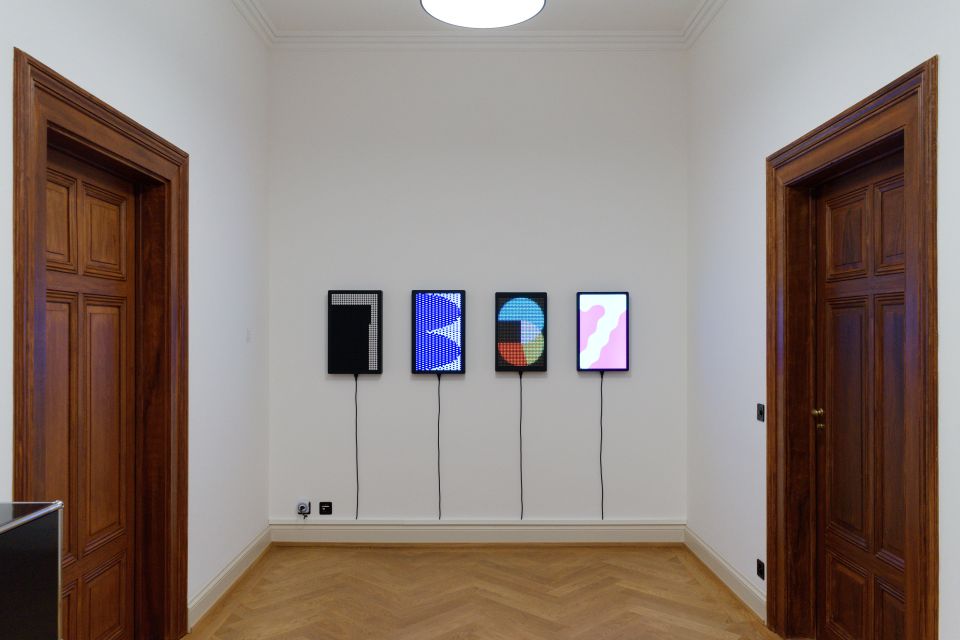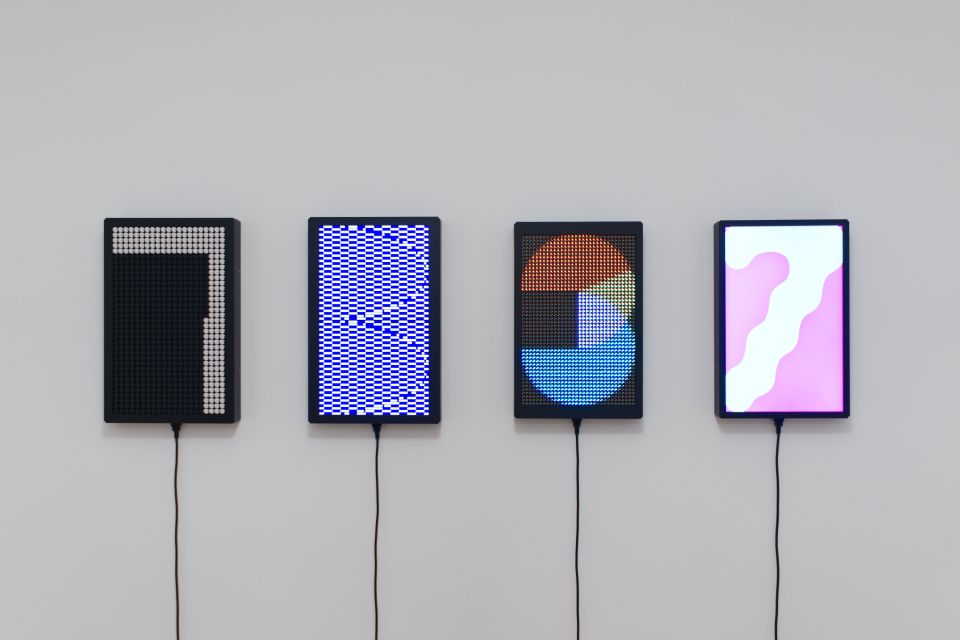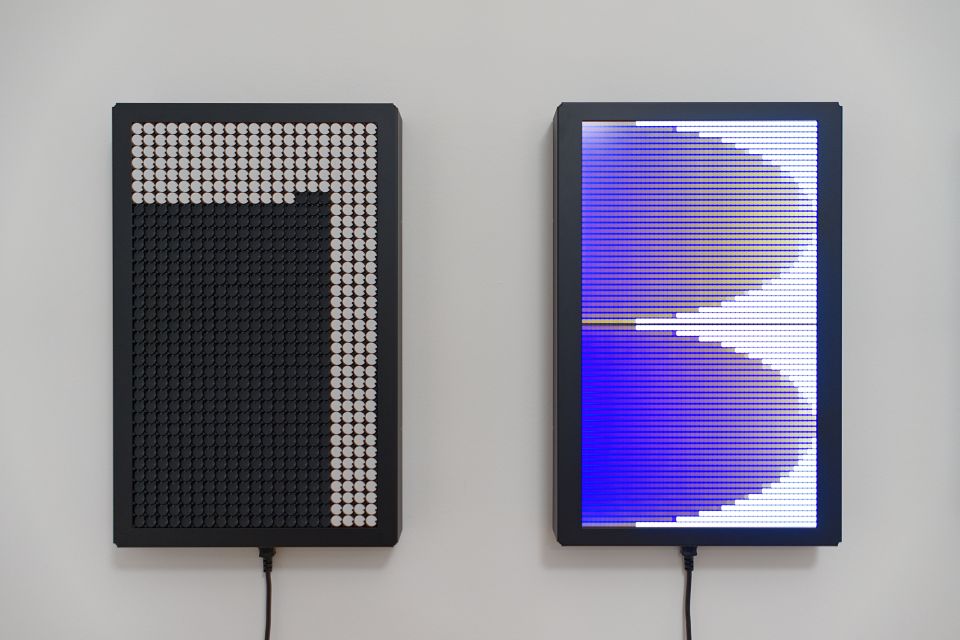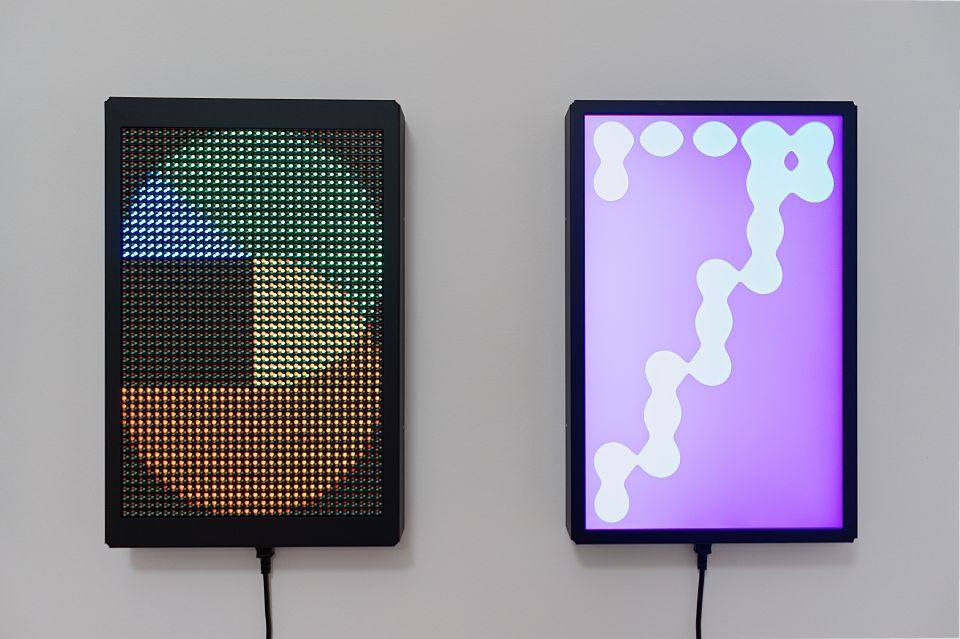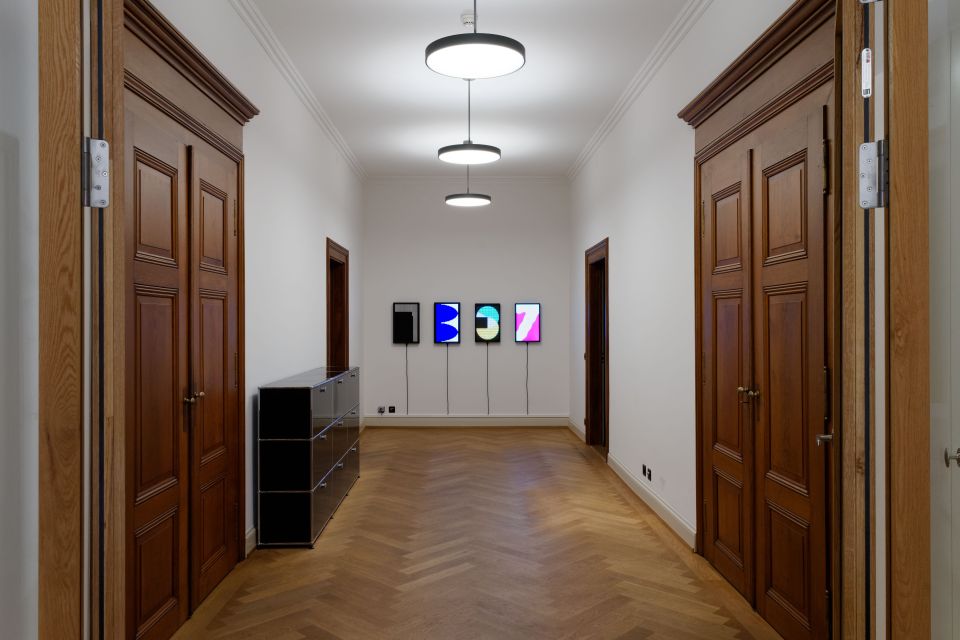Jürg Lehni
2020
Edition of 3 + 2 AP
with Urs Lehni, Alex Rich, Arno Schlipf & Bruno Thurnherr
Four Transitions is an artwork about the passing of time, originally commissioned by the Christoph Merian Foundation, for the collection of HeK – House of electronic Arts in Basel.
The work consists of four different custom made display units, each working with a different methodology that represents a different era in the history of display technologies.
Together, the displays work in tandem to unveil the current time, with each unit taking one minute to compose one numeral, deploying visual compositions and choreographies that correspond to the nature and character of each technology.
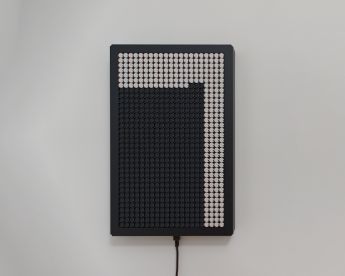
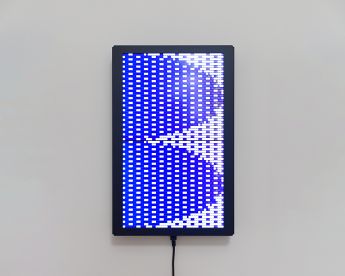
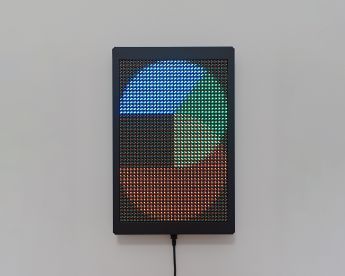
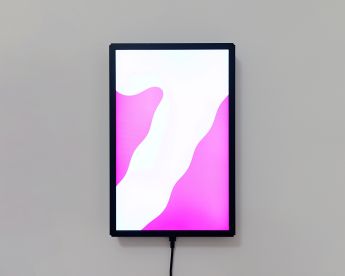
The four chosen technologies represent half a century of technological advancements. They were selected due to their very distinct character and potential, their different resolutions and the related distances at which the human eye dissolves the separate pixels into a coherent image.
The black and white Flip-Dot discs are flipped electromagnetically, each giving off a characteristic sound reminiscent of information boards at airports, railway stations and stock-exchanges.
The coarse monochrome LCD pixel grid glows in cold blue light caused by the electro-optic characteristics of the liquid crystals that either block the light or let it pass. It is also distinguished by its very slow data transmission and the capability to render this process visible as the data packages arrive in the displayʼs controller.
The LED display introduces the capability to mix almost any color, by varying the intensity of three separate light-emitting diodes in bright red, green and blue color. Their alignment is still coarse and the shifts between the color layers are visible to the eye, exhibiting similarities to the image rasterization techniques of print and their celebration in op-art.
And lastly, the modern-day TFT display deploys the same technique introduced with LCD but at much smaller size and in color due to its thin-film transistors and multiple color layers. It emits its images in resolutions and frame-rates so high that the eye does not normally perceive this trick anymore.
Each of these technologies were present in public spaces and transit hubs to fulfill the simple task of communicating ever-changing information. It was mostly only through their disappearance that we came to understand and appreciate their unique character and visual qualities.
Four Transitions shines a light on the continuous advancement of technology and celebrates the many different inventions that keep being made redundant by the unstoppable advancement of time and scientific progress. The work investigates the poetic potential that all technology holds but that often is only understood in hindsight – or when put in direct comparison with other such technologies.
Four Transitions was created in collaboration with Urs Lehni, Arno Schlipf and Bruno Thurnherr.
The work is the continuation of a concept originally developed with Alex Rich for a public art proposal at the HeK Museum in Basel.
In 2024, Kunsthaus Zürich has acquired the work for inclusion in their collection of new media art.
Further reading:
